
|
|
|
|
|
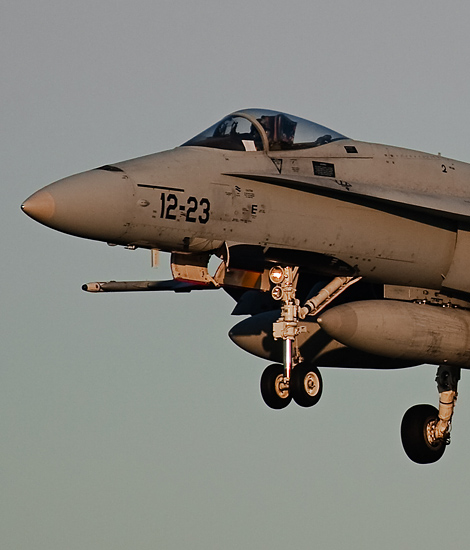
|
Photography at the Golden Hour; Florennes, December 11, 2008
Tactical Leadership Program 2008/6; Text and Photograph's by Alex van Noye
On Thursday, December 11, 2008, I went to the TLP for the last time this year. The temperature today was far below
zero degrees Celsius; it made the pictures very sharp and clear. This TLP edition was a unique experience in combination
with the low position of the winter sun.
Each TLP course consists of up to 26 slots. A slot is equal to an aircraft and its crew. There are each year about 160
slots available. The slots are sold to members of the MoU nations. This is based on their needs and operational requirements.
The remaining slots are offered and sold to the other NATO countries who can act as “Guest Participants”. Some examples of
countries which regularly participate as guest participants, are; Norway, Portugal and Turkey. The TLP Flying Branch will
organize up to six TLP courses each year depending on the allocation of slots. This is due to the different aircraft
types and operational roles of these aircraft. The TLP courses are usually divided into different subgroups of participants.
Usually 12 up to 18 aircraft will participate in the role of air to ground attack. These planes are specialized in close
air support, attacking enemy air defenses and reconnaissance flights over enemy territory. Also 4 up to 8 aircraft are
specialized in the air to air role as air defense and air superiority fighters. Types of aircraft that regularly appear
on the TLP, include; the F-4 Phantom, the F-16 Fighting Falcon, the F-18 Hornett, Mirage 2000, Rafale, Typhoon and Tornado.
The idea of the TLP is that each unit if possible will sent a two-seat variant or twin-stick version of its aircraft type
to the exercise. The back seat of this aircraft is occupied by an instructor during a TLP mission which includes supervision
and monitoring objectives. External Assets are invited to participate during certain phases of the exercise to get a more
realistic scenario. These non students are normally AWACS planes, helicopters and tankers. There are also many other types
of combat aircraft involved during the training, such as; ECM & SEAD aircraft and additional combat aircraft. Many TLP
missions are controlled by a NATO E-3A which originates from Geilenkirchen in Germany. The AWACS planes usually fly from
Geilenkirchen during the exercise, but sometimes they also fly from Florennes during the exercise. The TLP
|
|
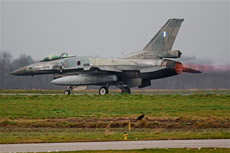
|
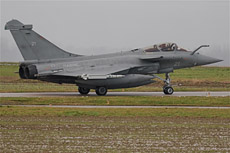
|
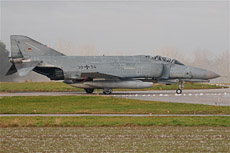
|
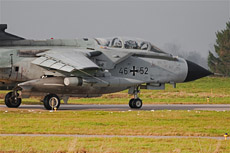
|
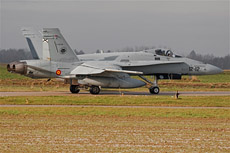
|
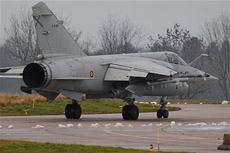
|
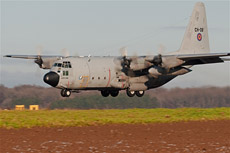
|
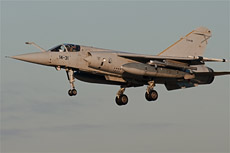
|
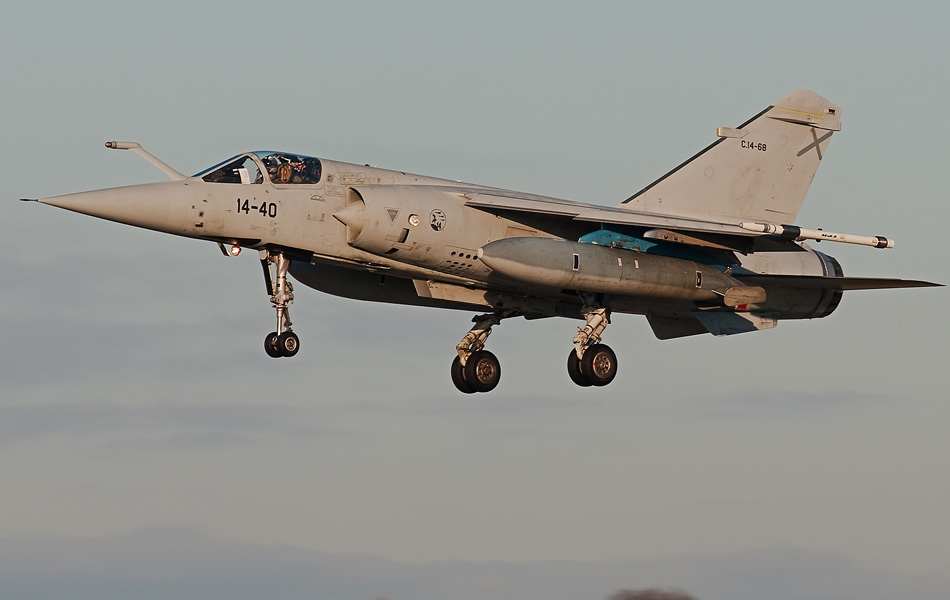
|
organization prefers that the AWACS will fly from Florennes, because then the AWACS crew can attend the briefing
and debriefing of the mission. Regular external assets are involved during the NATO exercise next to the participants
of the TLP. These aircraft often operate in the role of the enemy. Their primary task is to defend the airspace from
the TLP participants. Aircraft which often participate, are; German F-4’s, British Tornado F3's, French Mirage 2000's,
Spanish F-18's, Dutch and Belgian F-16's and specialized aggressors of the RAF with their Hawks. Also aircraft from
other European countries are generally welcome to participate in the exercise in the role of External Asset. The TLP
students can learn to distinguish friendly and hostile air forces. The other tactics used by the External Assets will
benefit the reality of the exercise, because students must learn to deal with these actions.
I arrived at 10 am for the last visit to the TLP of this year at the Belgian airbase Florennes. The weather today was
initially cloudy, but that changed very soon. Only the first departing aircraft left under a cloudy sky. All traffic
after these first aircraft left under excellent lighting conditions. The advantage of shooting on a cold winter day
is that the sky is very clear and that the sun is low on the horizon. Especially the returning of the second wave of
aircraft happened under excellent light conditions. The planes were all stained orange by the setting sun. There was
finally some activity on the TLP ramp after one hour of waiting. The people of the ground crew began to prepare the
aircraft for a TLP mission. The first engines were started after fifteen minutes. The first aircraft which appeared at
the head of the runway were three Portuguese F-16s from Monte Real. I was very happy with these F-16's, because it was
the first time I saw these planes since I was shooting digital. Two French Rafales, two Spanish Hornetts and two Spanish
Mirages appeared after the departure of the F-16's. Sadly, my main goal of this exercise stayed behind on the TLP
platform. My main goal of today’s mission were the Italian Navy Harriers, but they didn’t fly during today’s mission.
The Germans took part in this TLP mission with two Tornado ECR’s and two F-4 Phantoms. My second objective of the day
arrived after the departure of all these aircraft. These were four Greek F-16's. These aircraft were all equipped with
four fuel tanks which are placed on top of the wing roots.
It became quiet at Florennes for 1,5 hour after the departure wave. It was very cold today, because the temperature
was 5 degrees below zero. The first aircraft returned later in the afternoon to Florennes than usual. The first aircraft
that came in had nothing to do with the TLP. A Belgian Hercules made a number of touch and go's and disappeared again
towards Brussels. The first TLP participants which came back were the two Spanish Mirages. These light gray planes
looked good under the low sun. The sun dropped away further and further in a relatively short time. This was good for
the quality of the photos. The aircraft turned out yellow due to the light conditions when the Germans arrived. Later
this afternoon it turned into orange. The French Rafales and some Belgian F-16's followed soon after the Germans. The
blue color scheme of the four Greek F-16's looked great in these circumstances. These F-16's are based at the Greek
airbase Lasira. The Greek F-16's were followed by two Belgian F-16's. One had a special paint on its tail. The other
Belgian F-16 had a photo reconnaissance pod under the fuselage. The latest arrivals of this TLP mission were the three
Portuguese F-16's. It was now almost dark and the photos which I took of these aircraft were great. The Portuguese
F-16’s turned out completely orange by the setting sun. The TLP mission ended for today after the landing of the
Portuguese F-16’s. The quality of the photos was probably the best I've ever made during a TLP at Florennes. I
returned home with a satisfied feeling. For me this TLP edition was a worthy end to the year.
|
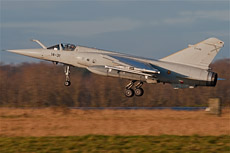
|
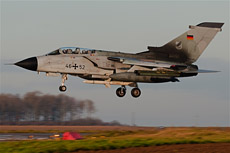
|
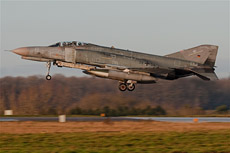
|
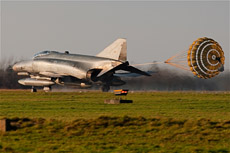
|
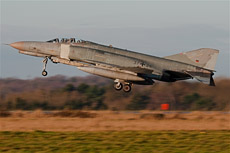
|
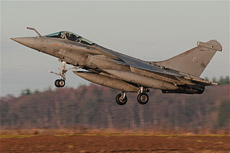
|
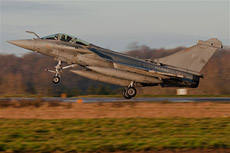
|
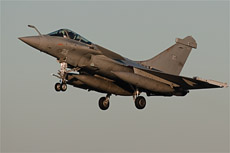
|
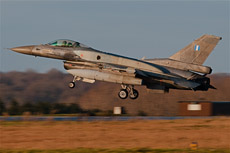
|
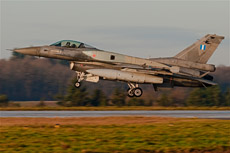
|
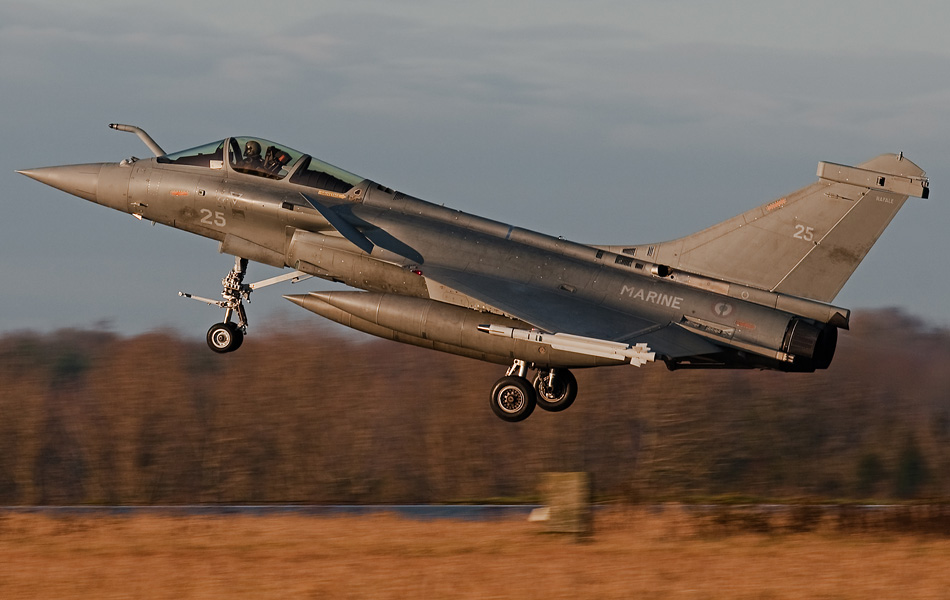
|
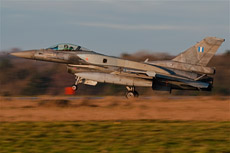
|
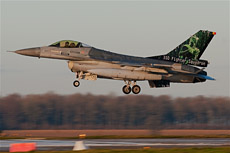
|
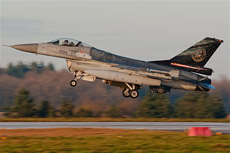
|
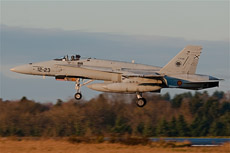
|
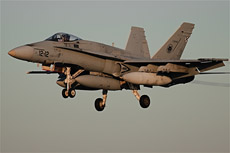
|
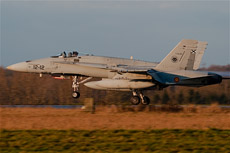
|
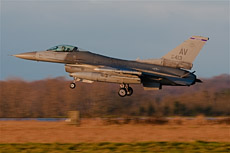
|
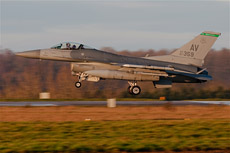
|
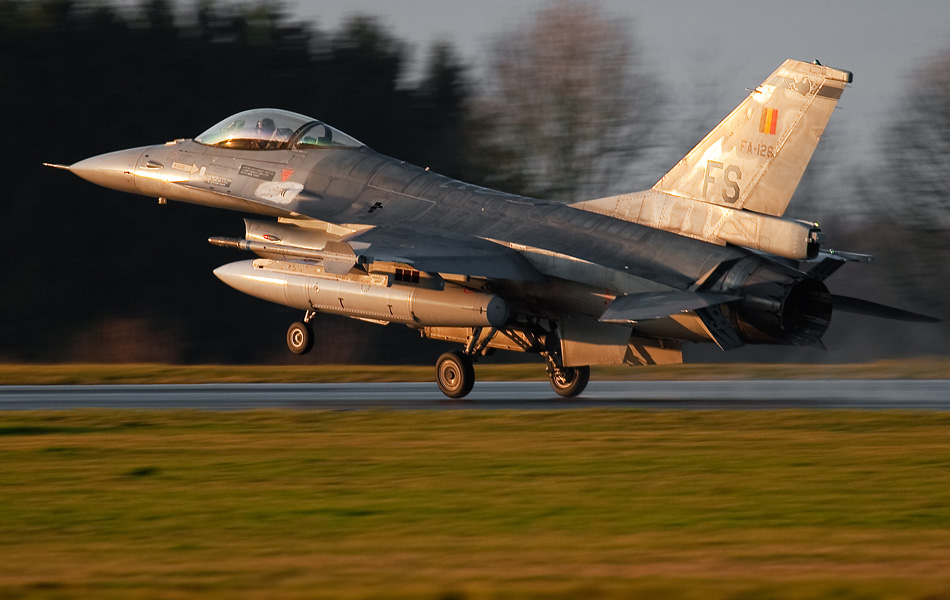
|
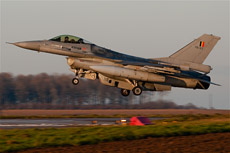
|
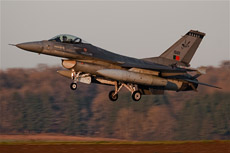
|
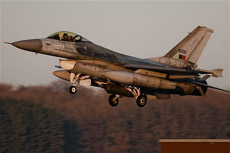
|
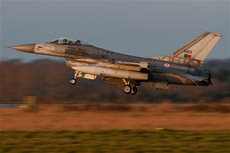
|
|
|

|







